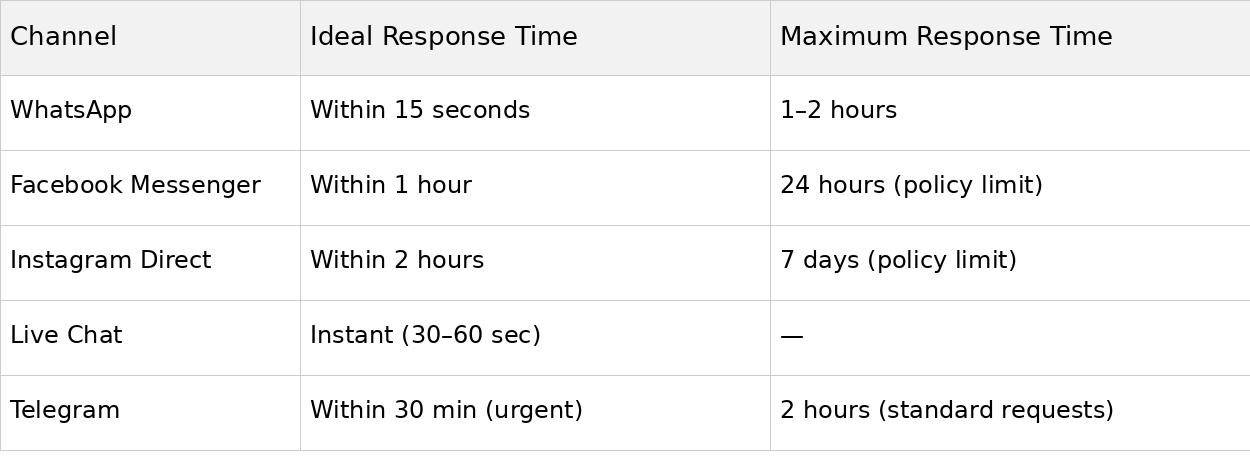Lipstick beats bag: how beauty is conquering online luxury

Customer service via messaging: discover why providing effective support on WhatsApp, Instagram and other social channels makes a real difference

Today’s customers no longer wait. In the age of endless scrolling and instant notifications, waiting for an email reply or holding on the phone can feel like an eternity. This is where the revolution of chat-based customer service comes in.
There has been a clear shift in communication habits: people now prefer sending a WhatsApp message over waiting for an email response. Why? Because today, speed matters more than formality. Messaging has become the new language of business relationships.
For companies operating in e-commerce, embracing this transformation means:
Meeting customers where they already are – on social media and messaging apps they use every day
Drastically reducing wait times – from hours to seconds
Creating more natural and human conversations – less formal, more effective
Gathering real-time feedback – to continuously improve the experience
The question is no longer if to adopt these channels, but how to implement them in the most effective way.

The adoption of instant messaging channels in customer service brings measurable benefits on two key fronts: it improves operational efficiency and increases customer satisfaction. It’s no surprise, then, that more and more companies are choosing to integrate these tools into their support strategies.
1. Response speed: the true differentiator
One of the most immediate benefits is the significant reduction in response times. Unlike email or call centres, messaging platforms enable quick replies—often in real time—with tangible impacts on user experience and business performance:
Lower bounce rates – customers stay on your site instead of leaving to seek alternatives
Higher conversions – instant support during the purchase process
Improved brand reputation – efficient service builds loyalty and creates ambassadors
Competitive advantage – faster communication than your competitors
2. Personalised, continuous conversations
Messaging platforms offer a more informal and direct communication environment, ideal for building a personal and lasting relationship with customers. This makes it possible to:
Maintain ongoing conversations, with accessible conversation history
Store and use customer preferences to deliver tailored responses
Suggest products or solutions based on past interactions
3. Operational efficiency and smart management
From an internal perspective, messaging allows for leaner and more scalable customer care. The combined use of human agents and automation improves productivity, reduces costs, and centralises information:
Reduced operating costs – more queries handled by the same team
Time optimisation – chatbots and automated replies for FAQs
Efficient workload distribution, with real-time prioritisation
Full traceability – every interaction is recorded and analysable

Success in chat-based customer service doesn’t happen by chance. It requires strategy, preparation, and a deep understanding of modern customers’ expectations.
Speed without compromising quality The numbers speak for themselves: customers expect a response within 5 minutes on WhatsApp and within 1 hour on Facebook Messenger. Failing to meet these timeframes means losing not only a sale but also the customer’s trust.
Expectations by channel are specific:
WhatsApp: ideally within 15 seconds, maximum 1–2 hours
Facebook Messenger: response within 1 hour for a good experience, maximum 24 hours due to policy
Instagram Direct: response within 2 hours, maximum 7 days due to policy
Live Chat: immediate, within 30–60 seconds
Telegram: response within 30 minutes for urgent requests, 2 hours for standard inquiries
The solution? Invest in smart automation for instant replies and have a skilled team ready to handle complex requests with maximum efficiency.
 Practical example: how T-Data manages multichannel support
Practical example: how T-Data manages multichannel supportT-Data has developed a customer service ecosystem capable of integrating all major messaging channels into a single, coherent and centralised operational strategy. The result is a seamless experience for the customer and efficient management for the company.
WhatsApp and social media
Direct communications for urgent requests and post-sale support
Proactive monitoring of Facebook Messenger and Instagram Direct
Automated responses for the most common FAQs
Live chat and alternative channels
Real-time support during site navigation
Use of Telegram for customers requiring greater privacy
Consistent presence on traditional channels (phone and email)
With this approach, T-Data transforms customer support into a strategic tool for engagement and sales. This translates into operational assistance and an active channel to build relationships, foster loyalty, and guide users towards conversion.